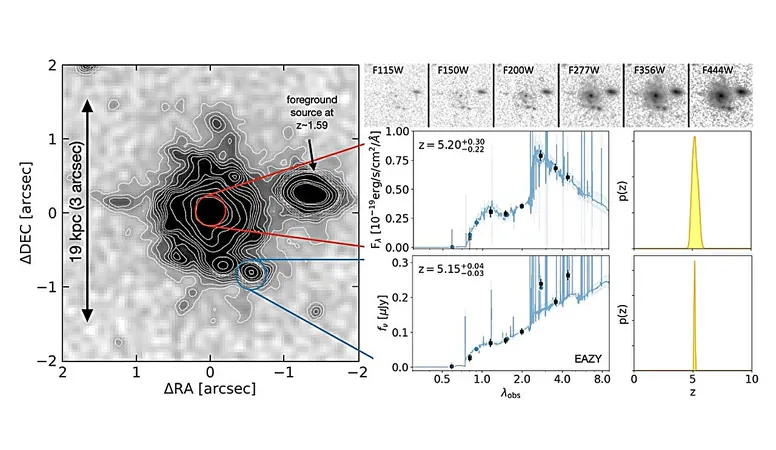
Astronomers Unveil Most Distant Ultra-Massive Spiral Galaxy Yet!
2024-12-28
Author: Jia
A groundbreaking discovery has been made by an international team of astronomers using the James Webb Space Telescope (JWST). They have identified a remarkable grand-design spiral galaxy known as Zhúlóng, which holds the title of the most distant spiral galaxy observed to date, discovered as part of the PANORAMIC survey. This exciting finding was detailed on December 17 in a paper available on the pre-print server arXiv.
Grand-design spiral galaxies are notable for their striking well-defined arms that gracefully spiral outwards from a prominent central core. Typically, these arms represent overdense regions of the galactic disk, where incoming matter becomes compressed, triggering new star formation. However, the formation timeline of these spiral galaxies remains largely a mystery, particularly for those existing in the early universe, making Zhúlóng's discovery feel more remarkable.
Led by Mengyuan Xiao of the University of Geneva, the team serendipitously detected Zhúlóng during examinations of JWST data. Its name, which translates to the "dragon" in Chinese mythology, symbolizes power and strength, much like the galaxy itself.
Zhúlóng is located at a photometric redshift of approximately 5.2, which means it formed less than a billion years after the Big Bang. This observation suggests its mass rivals that of our own Milky Way, an impressive feat for a galaxy so early in the cosmic timeline.
The structure of Zhúlóng is particularly fascinating, boasting a classical bulge and an expansive face-on stellar disk that stretches across 62,000 light years. Analysis of its spectral energy distribution reveals a quiescent core amidst a disk filled with ongoing star formation.
Interestingly, the core of Zhúlóng displays much higher stellar mass surface densities as compared to its stellar disk and is classified as quiescent—aligning well with current theories regarding how galaxies grow internally and undergo periods of inactivity.
Despite the star formation still taking place within Zhúlóng's disk, it has a relatively subdued overall star-formation rate, estimated at around 66 solar masses yearly. Moreover, the efficiency of converting baryons to stars in Zhúlóng is approximately 0.3, 1.5 times higher than many galaxies observed at later epochs.
These findings indicate that Zhúlóng was not only forming stars efficiently at an earlier stage in the universe but also signifies a transformative phase moving from an active star-forming galaxy to one that is more quiescent.
In summary, Zhúlóng challenges existing notions about the timeline of galaxy maturation, suggesting that the onset of such advanced structures occurred much sooner than previously anticipated, changing the way we view the early universe's evolution. This discovery opens a new chapter in our understanding of cosmic history and the formation of galaxies.


 Brasil (PT)
Brasil (PT)
 Canada (EN)
Canada (EN)
 Chile (ES)
Chile (ES)
 Česko (CS)
Česko (CS)
 대한민국 (KO)
대한민국 (KO)
 España (ES)
España (ES)
 France (FR)
France (FR)
 Hong Kong (EN)
Hong Kong (EN)
 Italia (IT)
Italia (IT)
 日本 (JA)
日本 (JA)
 Magyarország (HU)
Magyarország (HU)
 Norge (NO)
Norge (NO)
 Polska (PL)
Polska (PL)
 Schweiz (DE)
Schweiz (DE)
 Singapore (EN)
Singapore (EN)
 Sverige (SV)
Sverige (SV)
 Suomi (FI)
Suomi (FI)
 Türkiye (TR)
Türkiye (TR)
 الإمارات العربية المتحدة (AR)
الإمارات العربية المتحدة (AR)